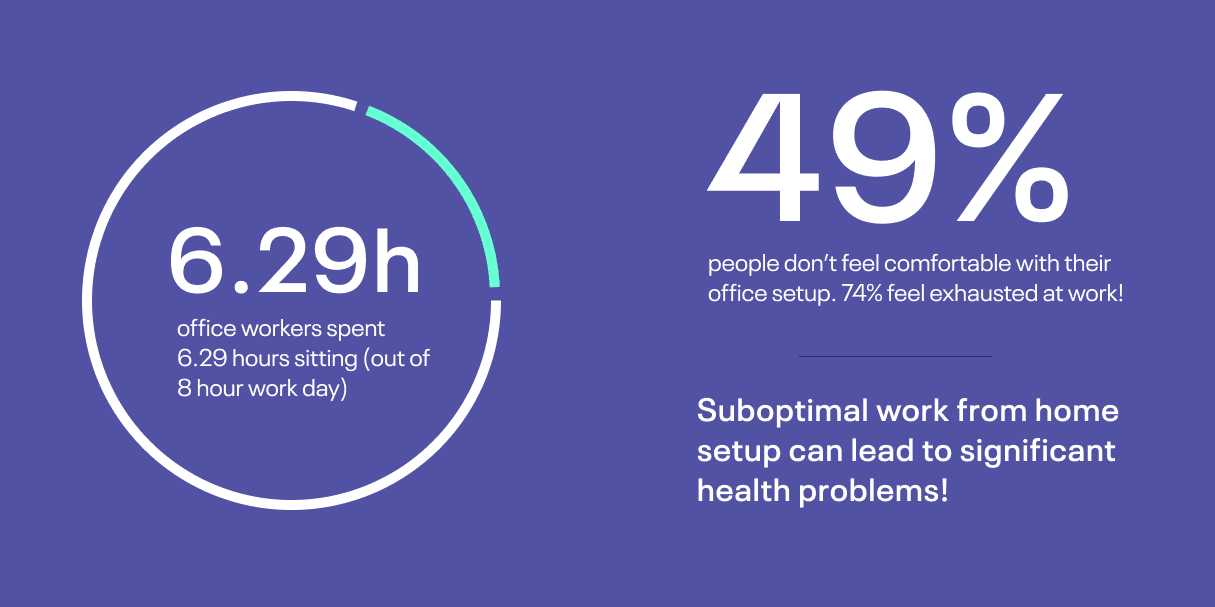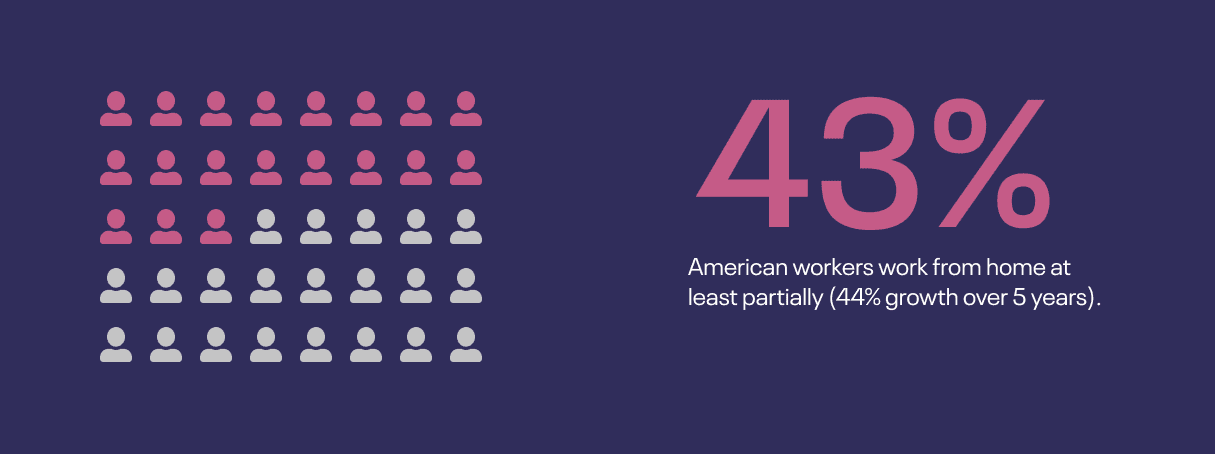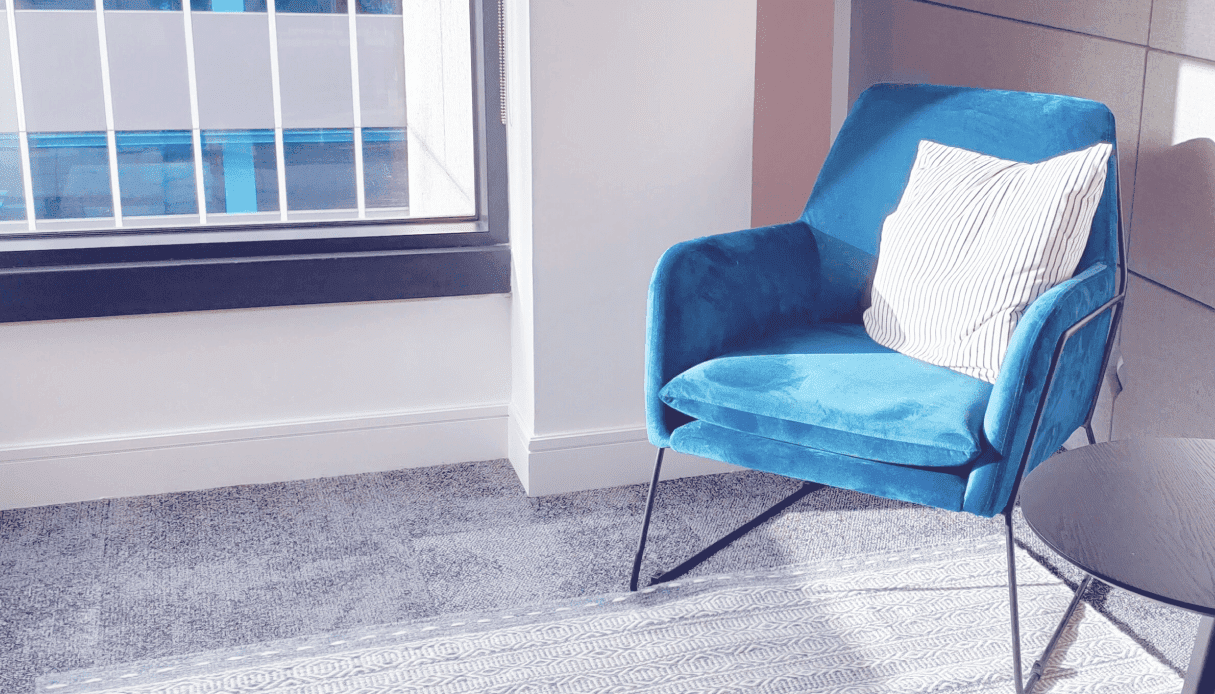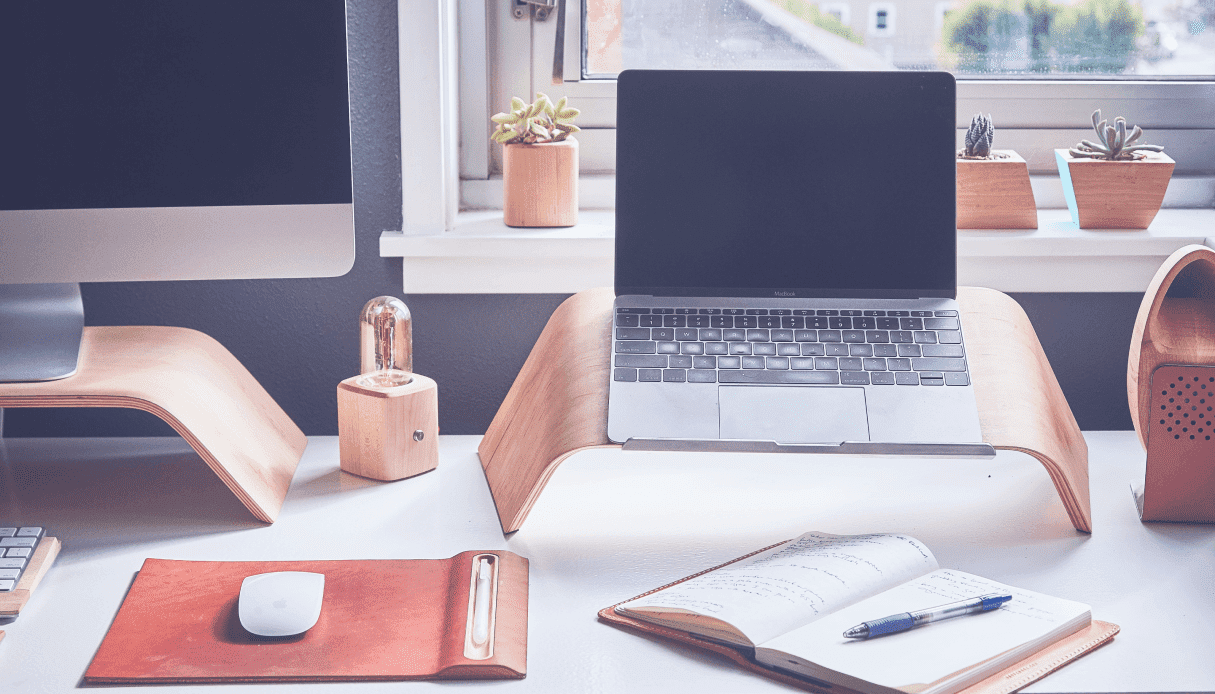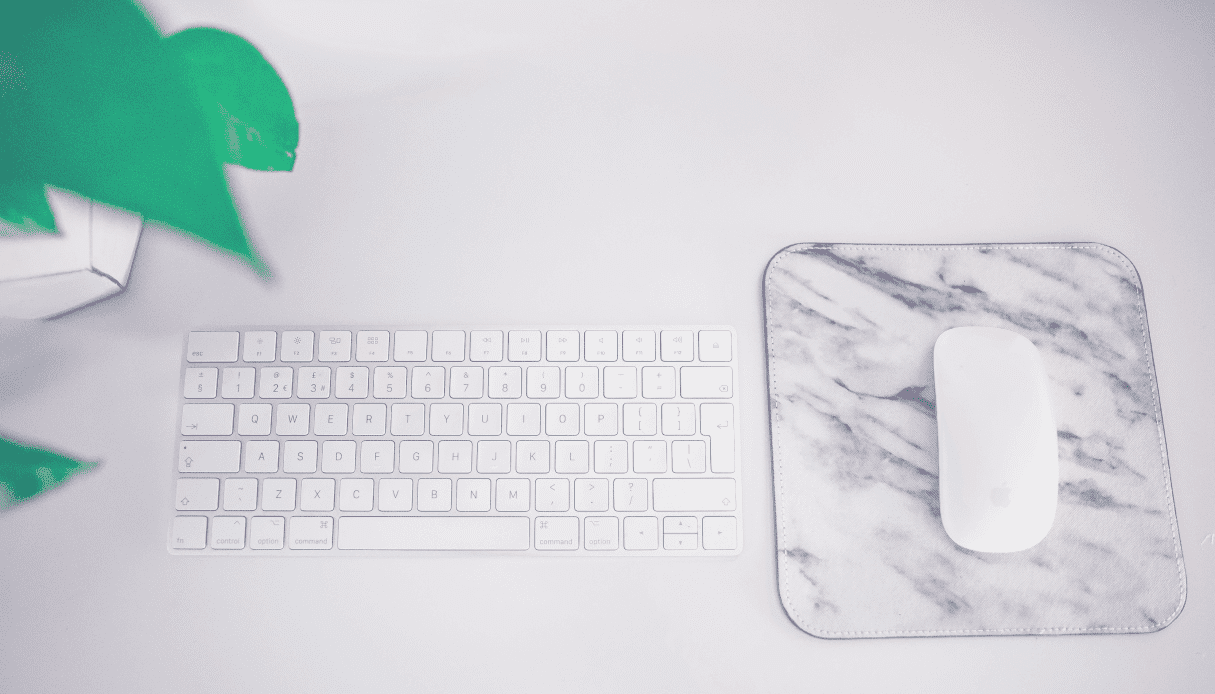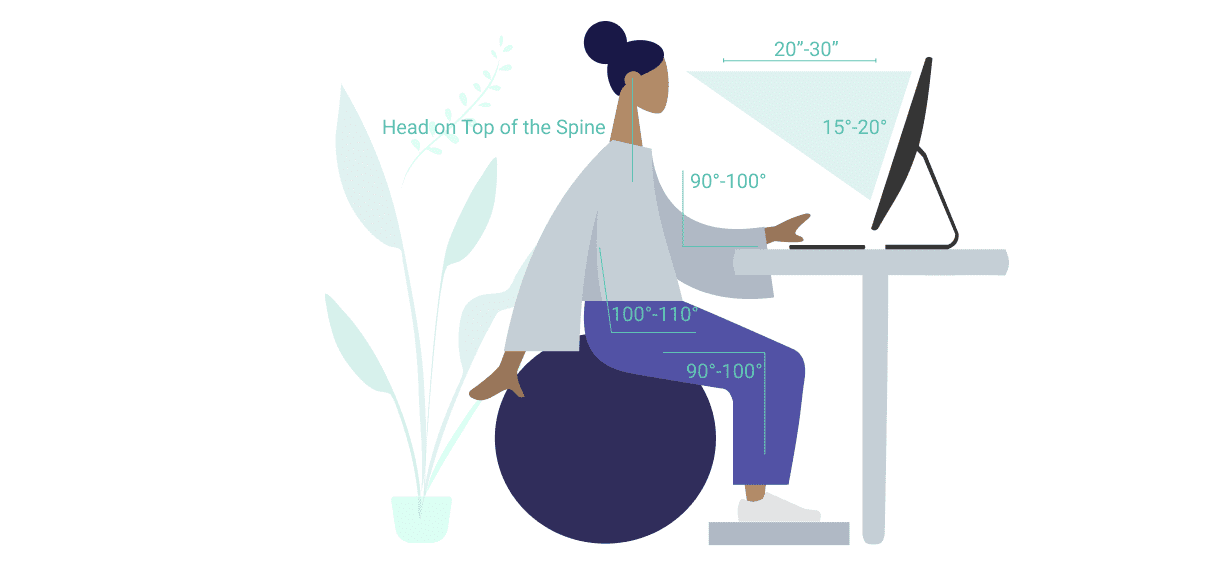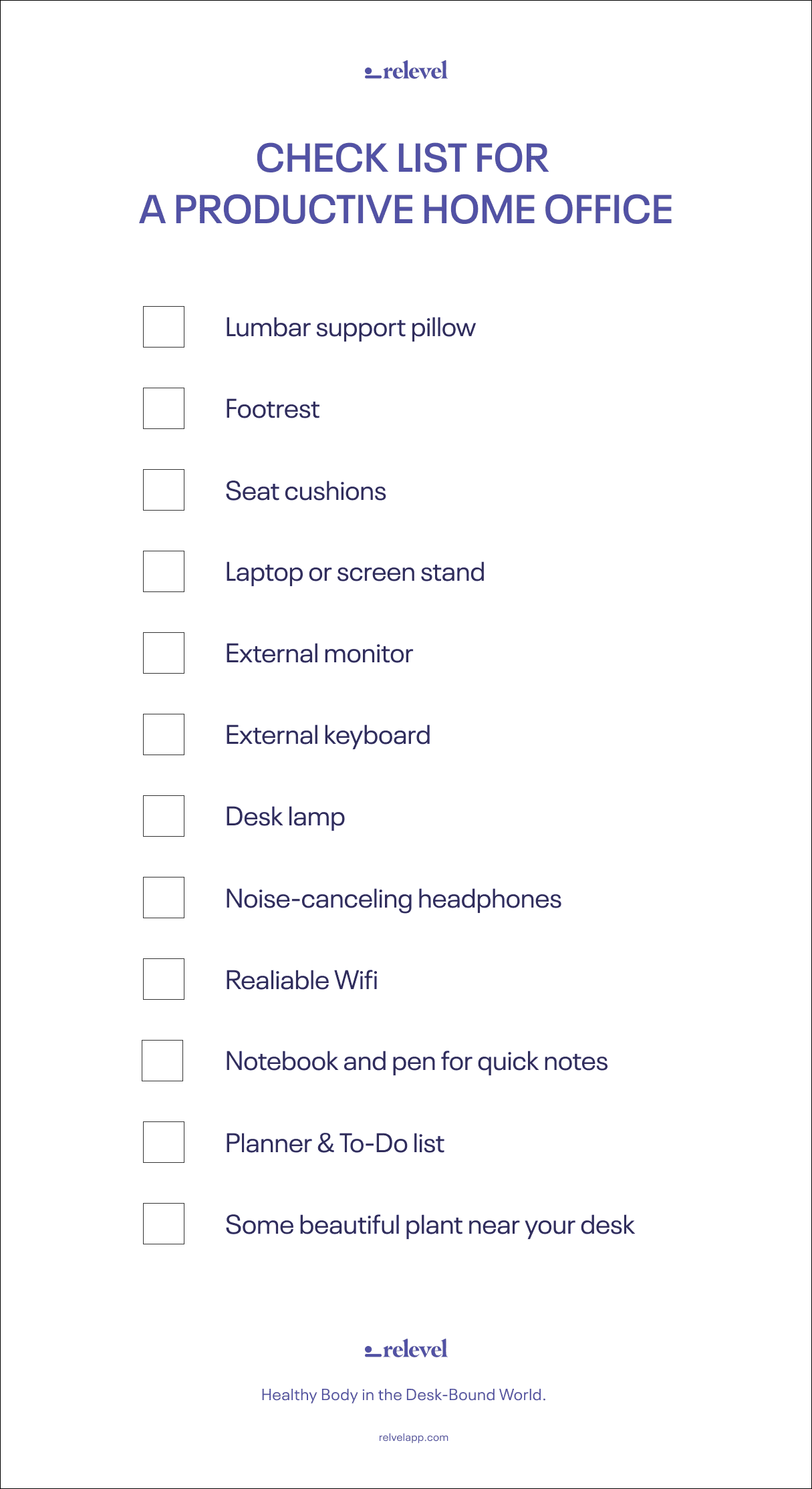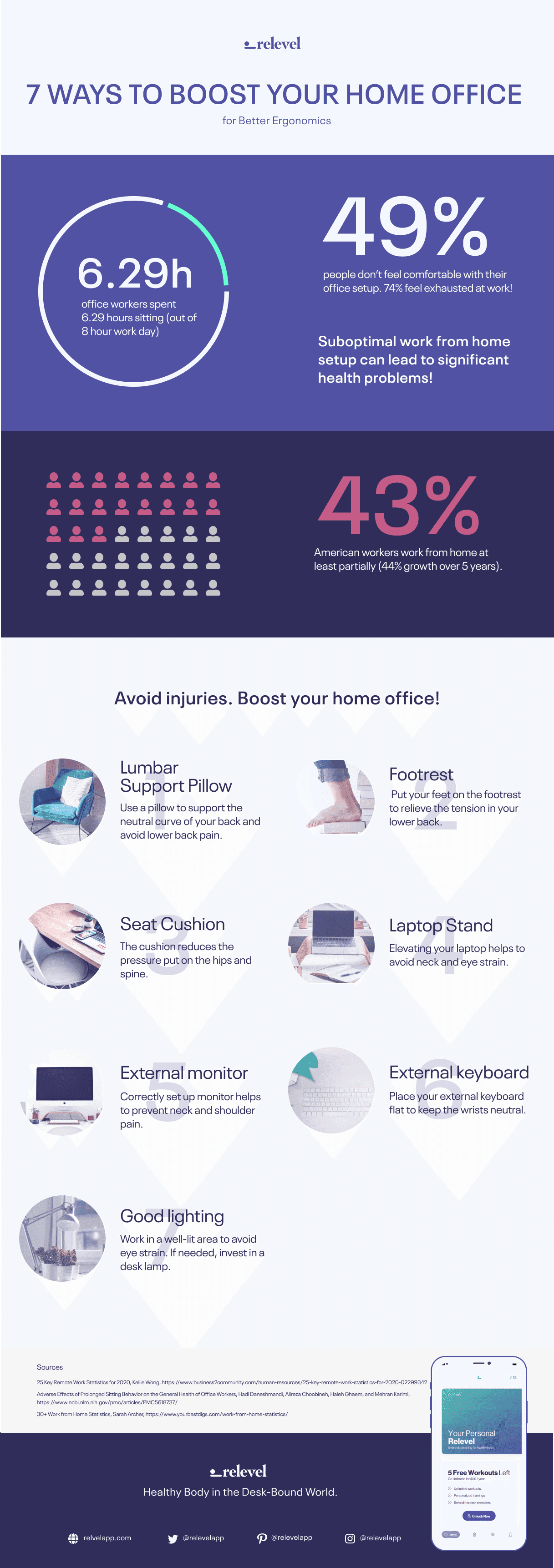7 Ways to Boost Your Home Office for Better Ergonomics.
If you, like many people, are stuck at home due to the recent coronavirus pandemic, you might notice that your home office doesn't quite resemble the ergonomic (hopefully) workstation that you are used to.
Are you starting to complain about the neck, lower back, or butt pain? When working from home, you are still going to be spending hours and hours in front of the screen, but now your posture is even more compromised as your temporary workspace might not be ergonomically adjusted to what your body needs.
In this post, I'm going to show you how you can quickly boost your home office with five items to improve the ergonomics and prevent body aches.
Whether your home office is moved to your guest bedroom, dining room, couch, or garden, let's make the best out of your current situation!
What is Ergonomics?
Ergonomics is the science that focuses on improving the design of everyday objects, such as chairs, or desks to optimize them for our use.
The goal of an ergonomic workstation is to keep you comfortable and healthy and, at the same time, increase your productivity. An ergonomic workstation will help you avoid unpleasant aches such as lower back, neck, or shoulder pain. 49% of people don't feel comfortable with their current office setup and 74% complain about feeling exhausted at work!
The Importance of an Ergonomic Workstation at Home
Nearly 43% of Americans work from home at least part of their workweek. As much as this work from home situation might seem temporary for some of you, it's important to create the most ergonomic environment for your office hours. Whatever postural habits you develop during this time will be with you in a longer run. Bad ergonomics affect not only the obvious areas of your body, such as your lower back, neck, or wrists. Adapting a bad posture can compress your internal organs, eg.your lungs.
Slouching will not only cause numerous muscle aches but also affect your ability to breathe correctly!
According to ACE rounded upper back and forward shoulder posture, that we often adopt when working in front of computers, "compresses the thoracic region and does not allow diaphragm (your breathing muscle) to fully open when breathing." So correct your posture for the sake of keeping your lungs healthy!
Let's not allow your temporary workstation to affect your health and posture! Keep reading to find out how to set up an ergonomic home office for a pain-free experience.
7 Items to Add to Your Home Office to Improve the Ergonomics
In this section, I’m going to talk about what 7 items to add to enhance your home office to help you withstand the long hours you spend there.
Whatever home space, you are temporarily calling an office, there are always ways to improve it!
Lumbar Support Pillow
Photo by Kunle Atekoja on Unsplash
If unsupported, your lumbar spine (lower back) could be exposed to a lot of tension. Do you find yourself tucking your tail and sitting back at your chair, almost falling off the seat? That position puts massive stress on your spinal column and the surrounding muscles.
When talking about the good seated posture, you need to know that it starts at the base of your spine and goes all the way to the top of the head. In other words, the way we position our pelvises impacts the rest of the spine- lower back, upper back, and neck.
Lumbar support pillows allow you to keep more contact with the back of the chair, which will help you put your pelvis in a better, more posture-friendly place. You can improvise and create home-made support with a blanket or a pillow. Alternatively, search for professional lumbar supports online.
Footrest
Photo by Gaelle Marcel on Unsplash
Your feet, ideally, should effortlessly rest on the floor. That position relieves the tension put on your lower back while sitting.
In the dream scenario, you can adjust the height of the chair and your desk to match the 90-110 degree bend in the knees, and 90-110 degree bend in the elbow. This position is the most optimal for long hours of work and the best one to avoid the aches.
Let's say your chair and/ or desk have only one fixed position, and your feet don't reach the floor. Instead of climbing them on to the legs of the chair, try to use a footrest to bring the ground closer to you. Use a stack of books or boxes to elevate the ground. If you want to be more pro, check out the best-rated footrests.
Seat Cushions
Photo by Alexandru Acea on Unsplash
If you sit too close to the ground and your knees are higher than your hips, the seat cushions might be the right choice for you. Keeping your knees more elevated than the hips when sitting tenses up the hip flexors, which can cause further problems and discomforts such as lower back pain.
Ergonomic seat cushion is an inexpensive way of boosting your chair. On top of helping to maintain a better posture, the cushion reduces the pressure put on the hips and spine.
So to help yourself solve this imbalance, improvise with home props to create elevation. You can use a pillow or a blanket. There are also many professional seat cushions on the market that can support your posture.
Laptop or Screen Stand
Photo by Grovemade on Unsplash
Laptop stands are a vital piece of home office equipment! Your screen should be set up to the height where your head will neither need to drop to look down or lift to look up. Both of which are bad for your neck. The ideal set up of the screen is when the top of your monitor is forehead height and arm-distance away from you.
Not having your screen adjusted to the proper height and distance puts tremendous stress on the muscles surrounding your head, neck, shoulders, and the upper back. They are getting beat up, simply because your head isn't sitting on top of your spine correctly. The neutral neck position is the key!
The screen stand will help you adjust the monitor height to a correct position. Again, you can be creative with what you already have at home. Most popular are large stacks of books or boxes. Or, look and see what the internet has to offer in the laptop stand department.
External Monitor
Photo by Gabriel Beaudry on Unsplash
While writing this article, I had a conversation with my husband, a designer. He cannot imagine working from home without an external monitor. Why? The reasons are comfort and better work experience. External screens, assuming they are set up correctly, help you position your head to avoid tensing the upper body. Some of the external monitors are also designed to minimize eye strain.
Your external monitor, similar to your laptop, should be set up to minimize the neck strain. Keep it straight in front of you 20-30 inches away from your head (approximately the arm length distance).
If you want to treat yourself with an external monitor here is a list of highest rated products by Popular Mechanics.
External Keyboard
Photo by Aleksandra Wantuch on Unsplash
An external keyboard is a great addition to boost the ergonomics of your home office. Especially if you prefer to work on the laptop screen, it is difficult to position your arms correctly with the elevated laptop. The external keyboard is there to serve you!
Incorrect way of typing creates tension in the surrounding muscles and nerves and can cause carpal tunnel syndrome. External keyboard in your home office will help you achieve the optimal arm position, which is with the keyboard slightly below the elbow level, and the elbows bend at 90-100 degrees.
Check out the best keyboards according to Tech Radar.
Good Lighting
Photo by Daan Stevens on Unsplash
Ensure that your home office has plenty of good, preferably natural light. If you are going to spend hours looking at the screen, you want to make sure that your surroundings aren't dark so that you are not fixing your gaze at one lit up space, which could cause eye strain and headaches.
Ergonomic specialists from the University of British Columbia advice to take visual breaks for 20 seconds every 20 minutes. You can use that time to exercises your eyes. Roll them up and down, look side to side, or gaze at a beautiful plant or any eye-pleasing object that you located on your home desk. Try adjusting your screen brightness between 40-65% to avoid eye fatigue.
Need some extra lighting? Architects Guide shows some not bad looking desk lamps over here.
Postural Tips for Your Home Office
The 7 tips to improve your home office experience will help you to achieve a more balanced posture. However, be mindful of your body position, whether or not you decided to use all of them. Here are a few tips on how to maintain a good posture at work.
- Sit on top of your sit bones with the knee is 90-100 degree bend
- Keep your back neutral, reclining in your chair to achieve 100-110 degree is most recommended by ergonomic specialists (http://ergonomictrends.com/proper-sitting-posture-computer-experts/)
- Keep your head on top of the spine
- Keep your shoulders relaxed
- Keep your wrists neutral and your elbows with a 90-100 degree bend
- Don't cross the legs- which reduces the correct blood flow.
No matter how ergonomic your office space is, if you are not mindful of your posture, you are still going to be in pain!
If you want more postural tips, look into my article on how to improve posture and relief the aches associated with hours spend being desk-bound.
Don’t Forget to Exercise
I hope you find these tips useful and you can imply them to your temporary home offices and maybe even back to your regular workplaces.
Remember, you should always listen to your body, and if the set up doesn't work for you, adjust it! With your newly set up ergonomic home office, don't forget to keep moving throughout the day.
- Take breaks to walk around your house, walk your dog, breathe in the fresh air to exercise your lungs.
- Take breaks for quick 15 minute exercises with Relevel App.
Subscribe today to receive more tips on the home office ergonomics and how to deal with any aches you might be experiencing when working in front of your computer.
Leave me a comment if you found any of these tips helpful and perhaps share the picture of your improved home office!
Before you go, take a look at the home office checklist to see what other essential items can fill in your workstation. Feel free to print it out! Enjoy!
